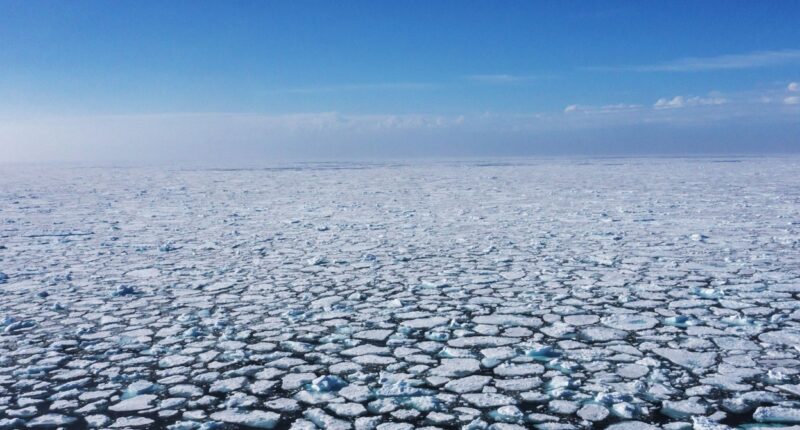

Not even the Arctic Ocean is immune to the incessant growth of microplastic pollution. In a new study that analyzed sediment core samples, researchers quantified how many of the particles have been deposited since the early 1930s. As scientists have shown elsewhere, the team found that microplastic contamination in the Arctic has been growing exponentially and in lockstep with the growth of plastic production—which is now up to a trillion pounds a year, with the global amount of plastic waste projected to triple by 2060.
These researchers analyzed the seawater and sediment in the western part of the Arctic Ocean, which makes up 13 percent of its total area. But in just that region, they calculated that 210,000 metric tons of microplastic, or 463 million pounds, have accumulated in the water, sea ice, and sediment layers that have built up since the 1930s. In their study, published last week in the journal Science Advances, they cataloged 19 synthetic polymer types in three forms: fragments, fibers, and sheets. That reflects a dizzying array of microplastic sources, including fragments from broken bottles and bags and microfibers from synthetic clothing.
Overall, the team found that microplastic levels have been doubling in Arctic Ocean sediments every 23 years. That mirrors a previous study of ocean sediments off the coast of Southern California, which found concentrations to be doubling every 15 years. Other researchers have found an exponential rise in contamination in urban lake sediments.
The problem is likely to keep getting worse, lead author Seung-Kyu Kim, a marine scientist at Incheon National University, told WIRED by email. “The input of microplastics into the Arctic has increased exponentially over the past decades, with an annual increase rate of 3 percent,” Kim writes. “The mass production of plastic at an 8.4 percent annual increase—coupled with inefficient waste management systems—is projected to further increase loads of plastic entering the ocean for the next several decades, and thus plastic entering the Arctic will increase proportionally.”
The atmosphere, too, is increasingly infested with microplastics. By one calculation, the equivalent of hundreds of millions of disintegrated plastic bottles could be falling on the United States alone. A study of a peatland area in the Pyrenees found that in the 1960s, less than five atmospheric microplastics were being deposited per square meter of land each day. It’s now more like 180.
This new Arctic paper “helps to show that any increase in production is matched in the environment,” says Steve Allen, a microplastics researcher at the Ocean Frontiers Institute who did the peatland study. “And as more research into human exposure comes to light, I believe the increase will also be shown in human bodies.”
Microplastics are readily moving between different environments. A previous study found 14,000 microplastics per liter of Arctic snow, the stuff having blown in from European cities. Microplastics are also arriving in the Arctic by sea: When you wash your clothes, hundreds of thousands—or even millions—of synthetic fibers break off and flush into a wastewater treatment facility, then eventually to the ocean. Currents then transport microplastics up into the Arctic, where they swirl around and eventually settle in the sediment. Allen and other scientists reported in May that a single recycling facility might emit 3 million pounds of microplastics a year—and those were numbers for a brand-new plant that filtered its runoff water.








